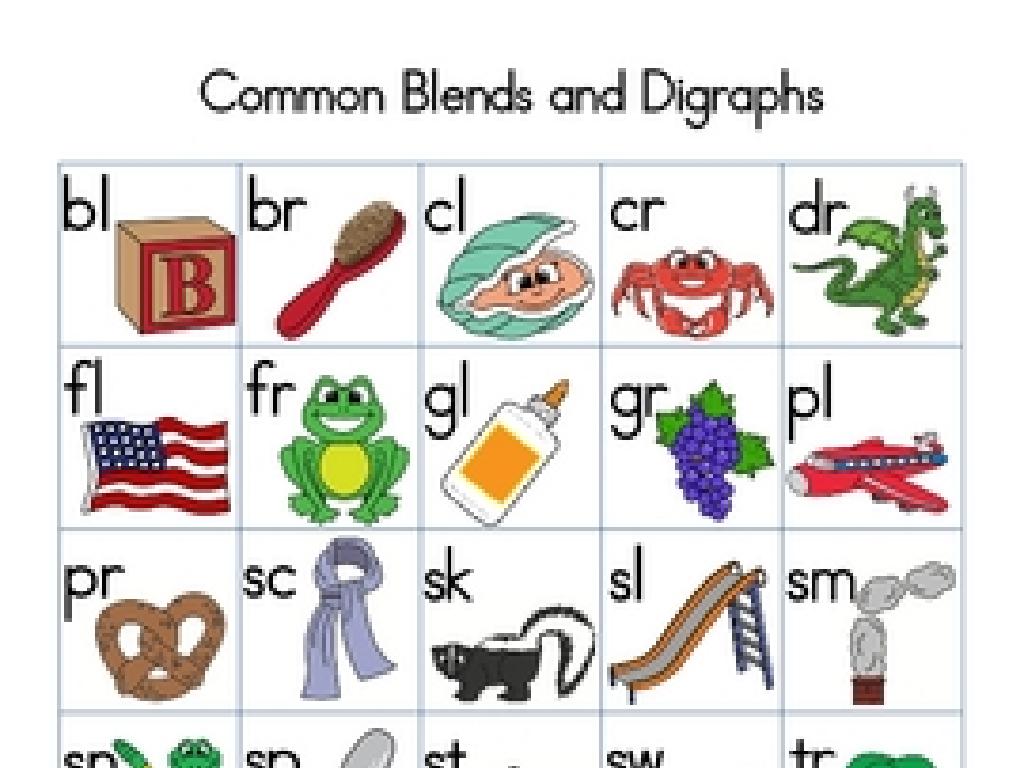Middle Colonies: Economy And Society
Subject: Social studies
Grade: Fifth grade
Topic: English Colonies In North America
Please LOG IN to download the presentation. Access is available to registered users only.
View More Content
Exploring the Middle Colonies: Economy and Society
– Meet the Middle Colonies
– New York, New Jersey, Pennsylvania, Delaware
– English Colonies in North America
– Part of the 13 original British colonies
– Focus on Economy
– Agriculture, trade, and diverse jobs
– Society in the Middle Colonies
– Diverse cultures and religious freedom
|
This slide introduces the Middle Colonies as part of the larger context of the English colonies in North America. Emphasize the unique geographic and cultural characteristics of New York, New Jersey, Pennsylvania, and Delaware. Discuss how the economy was driven by agriculture, trade, and a variety of occupations due to the fertile land and navigable rivers. Highlight the social aspect, focusing on the cultural diversity and religious tolerance that were hallmarks of the Middle Colonies. Encourage students to think about how the economic activities might have influenced the society and vice versa. Prepare to delve deeper into the specifics of the economy and society in the following slides, providing a foundation for understanding the development of these colonies.
Geography and Climate of the Middle Colonies
– Middle Colonies’ location
– Located between New England and Southern colonies
– Climate effects on life
– Mild winters and fertile soil influenced farming and daily activities
– Geography shaping economy
– Rivers and valleys supported trade and agriculture
– Diverse, productive land
|
This slide aims to teach students about the geographical location of the Middle Colonies and how their climate and geography played a significant role in shaping their economy and society. The Middle Colonies, situated between the New England and Southern colonies, enjoyed a milder climate with fertile soil, which was perfect for farming a variety of crops. The presence of rivers and valleys not only made the land more productive but also facilitated trade and transportation. Emphasize the diversity of the region’s economy, which included farming, manufacturing, and trade. Encourage students to think about how living in such an area would influence their daily lives compared to other regions.
Agriculture in the Middle Colonies
– Known as ‘Breadbasket’ colonies
– They were called this because they grew so much grain.
– Crops: wheat, barley, oats
– Staple crops that fed many people.
– Agriculture’s economic role
– Farming was the main source of income and trade.
– Farming as a way of life
– Most families worked their own land to grow food.
|
This slide introduces students to the agricultural foundation of the Middle Colonies in North America. Emphasize the nickname ‘Breadbasket’ colonies to help students remember that these colonies were known for their abundant grain production. Highlight the importance of staple crops like wheat, barley, and oats, which were essential for the colonists’ survival and were also traded. Discuss how agriculture was not just an economic activity but a way of life that shaped the society and culture of the Middle Colonies. Encourage students to think about how farming today compares to farming during colonial times and the impact of agriculture on our daily lives.
Trade and Commerce in the Middle Colonies
– Bustling ports as trade hubs
– Cities like New York and Philadelphia grew around busy ports trading goods.
– Variety of goods traded
– Colonists traded items like wheat, furs, and iron with each other and Europe.
– Merchant class significance
– Merchants gained power, influencing economy and society.
– Trade with Europe
– Transatlantic trade brought European goods in exchange for colonial products.
|
This slide aims to teach students about the economic vitality of the Middle Colonies due to trade and commerce. Highlight how strategic ports like New York and Philadelphia facilitated the exchange of goods, leading to the growth of these cities. Discuss the variety of goods that were commonly traded, including agricultural products and natural resources. Emphasize the rise of the merchant class and their role in shaping the colonial economy. Lastly, touch upon the trade relationships with Europe and how this transatlantic exchange was crucial to the colonies’ prosperity. Encourage students to think about how trade affects their own lives today.
Diversity in the Middle Colonies
– Cultural diversity impact
– Diversity led to rich culture, varied skills
– Variety of religious, ethnic groups
– Groups included Quakers, Dutch, Germans
– Settlers’ tolerance and cooperation
– Different beliefs coexisted peacefully
– Unity in diversity
|
This slide aims to highlight the unique cultural and social landscape of the Middle Colonies during the colonial period. Emphasize how the mix of different cultures and backgrounds contributed to a rich and varied society, with a range of skills and traditions. Discuss the presence of various religious and ethnic groups such as Quakers, Dutch, Germans, and others, and how their coexistence underlined the colonies’ relatively tolerant attitude. Highlight examples of cooperation among settlers, such as in trade, governance, and community events, which helped to foster a sense of unity despite their differences. Encourage students to think about how this diversity compares to modern American society.
Daily Life in the Middle Colonies
– Family roles in society
– Each family member had specific duties, like farming, cooking, or trade work.
– Education’s importance
– Schools were few, but education was valued for children’s future.
– Literacy in the colonies
– Ability to read and write was essential for trade and business.
– Recreation and social life
– Community gatherings, games, and church were key social activities.
|
This slide aims to give students a glimpse into the everyday life of people in the Middle Colonies. Discuss the traditional roles of family members, emphasizing the collaborative nature of colonial families where everyone contributed to the household and community. Highlight the value placed on education despite the scarcity of formal schools, and how literacy was crucial for communication and commerce. Finally, explore the recreational and social aspects of colonial life, including common games, festivals, and the central role of the church in community bonding. Encourage students to compare and contrast colonial life with their own, fostering a deeper understanding of historical lifestyles.
Class Activity: Creating a Middle Colony
– Form groups to build a colony
– Choose location, climate, resources
– Develop your colony’s economy
– Consider crops, trade goods, and who will work
– Present your colony to the class
|
This activity is designed to help students understand the factors that influenced the development of the Middle colonies. Divide the class into small groups, each tasked with creating their own colony. They should consider the geographical location, which will affect their climate and available resources. Students must then decide how their colony will sustain itself economically through agriculture, trade, and labor systems. Each group will present their colony, explaining their choices and how they expect their colony to thrive. Provide guidance on historical accuracy and encourage creativity. Possible activities: one group could focus on a fishing economy, another on farming, another on trade, and another on mixed economy.





